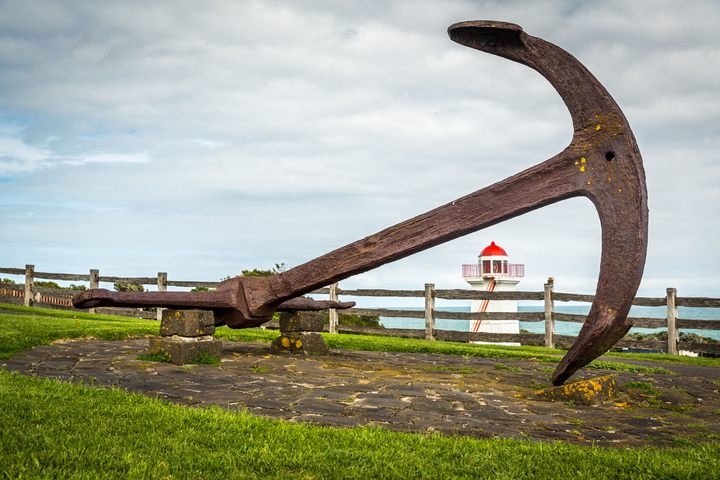
An Australian Town’s Identity Rests on a Ship That May Not Exist
Did a 16th-century Portuguese vessel run aground here? Doubtful, but why not celebrate it anyhow?
The afternoon is overcast, the ocean churning, between Port Fairy and Warrnambool, on the Shipwreck Coast of Victoria, Australia. A man and woman carry shovels and a metal detector along the beach. I ask if they are looking for Warrnambool’s notorious wreck, the Mahogany Ship. Without hesitation, the man answers: “I’ve been searching for the Mahogany Ship for 15 years.”
The Shipwreck Coast is a dramatic 80-mile stretch of jagged cliffs and deep gorges, limestone formations and towering dunes. It is estimated that nearly 700 ships wrecked along this coastline between the mid-18th and early 19th centuries, a period known as the golden age of sail. Many of the ruined vessels are still visible; skeletal, sun-bleached hulls break through the surf, anchors corrode on the beach. In Warrnambool alone—the coastline’s largest city—29 shipwrecks rest at the bottom of the bay. One of those wrecked vessels is believed to be a 16th-century Portuguese caravel known as the Mahogany Ship. There’s just a small issue: The ship may not be from the 16th century. Or Portuguese. Or real.

“In 1836 … two men working at a whaling station at Port Fairy were walking along the sand dunes and saw somewhere in the dunes a very old shipwreck,” says Pat Connelly, founder and chairman of the Mahogany Ship Committee, a loose organization of individuals dedicated to proving the wreck’s existence.
The wreck was spotted several times in the following years; witnesses described it as built from a dark timber hard enough to snap a knife blade, with a hull that was flat-bottomed and wide, unlike the barques and clippers that sailed regularly into Victoria’s booming port towns. Gunditjmara Aboriginal elders claimed that the shipwreck had been there for so long that it was a part of their Dreamtime Trails—ancient tracks connecting water sources, camping spots, and sacred sites. Theories abounded over the ship’s origins; some maintained that it was nothing more than a whaling punt, while others believed it to be an ancient Chinese junk. One enticing possibility held that the wreck had been a crudely built ship piloted by convicts escaping Van Diemens Land (present-day Tasmania). But out of all the theories, it was the most far-fetched and fantastical one that stuck.

In 1876, Port Fairy resident and British militia captain, John Mason, wrote a letter to the Melbourne-based publication, The Argus, describing his first visit to the wreck some 30 years earlier. Mason speculated that the ship was built of mahogany, marking the first time the word had been associated with the wreck. He also recalled a conversation that he had once had with Samuel W. McGowan, then Victoria’s superintendent-general of telegraphs, in which McGowan informed him that the wreck was “…supposed to be one of a fleet of Portuguese or Spanish discovery ships, one of them having parted from the others during a storm, and was never again heard of.”
“There was no proof that it was [a Portuguese or Spanish discovery ship],” says Connelly, “but the word spread.” People flocked to the dunes, tantalized by the untold riches purported to be aboard. However, by 1880 the wreck had disappeared, buried by shifting sands and beach grass. Despite several major archaeological expeditions, Australia’s most captivating shipwreck remains a mysterious enigma, curiously lost to time.
In 1977, the Portuguese theory was resurrected—and seemingly confirmed—by a book called The Secret Discovery of Australia, written by lawyer and historian, the late Kenneth McIntyre. McIntyre asserted that the Mahogany Ship was one of a trio of caravels captained by Cristóvão de Mendonça in 1522 on a covert exploration through Spanish-controlled waters. Ironically, the ships were searching for another bit of maritime lore: Marco Polo’s fabled island of gold, Jave la Grande. According to McIntyre, Mendonça successfully charted the east coast of Jave la Grande before changing course for home after the Mahogany Ship sank in a perilous storm.
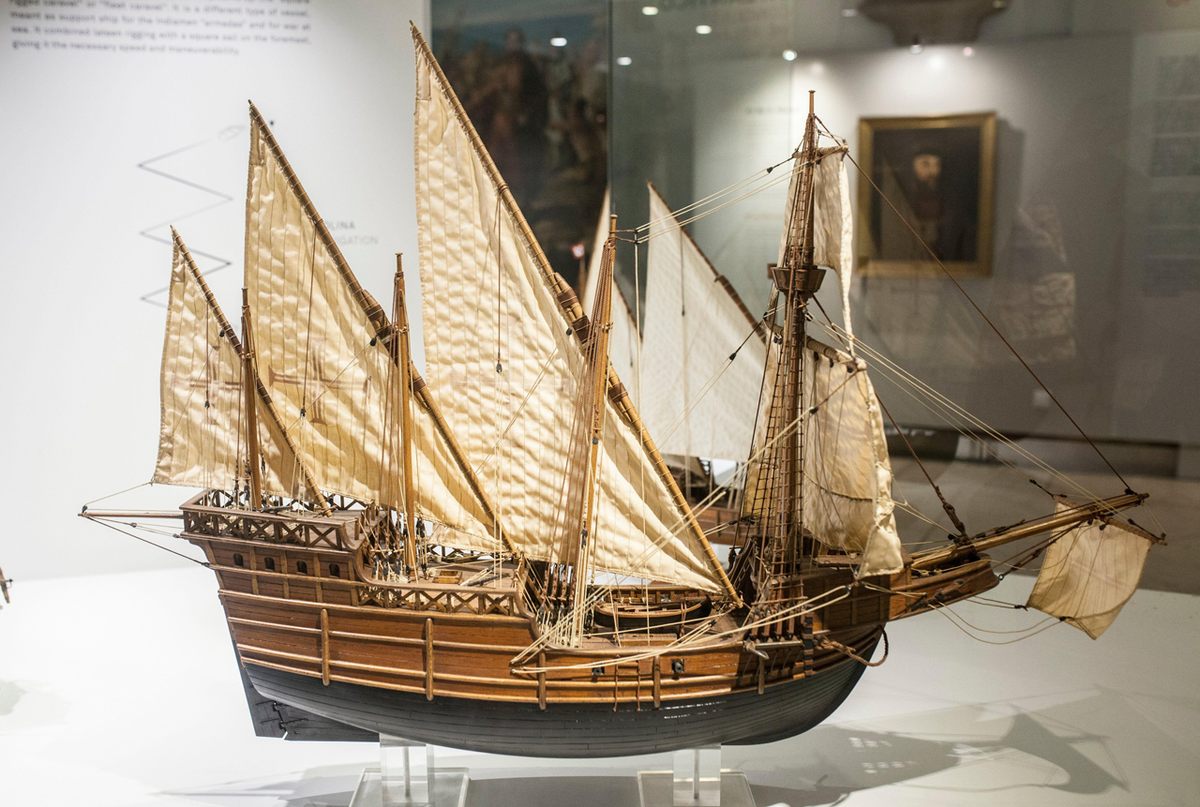
McIntyre’s claims hinged on a 16th-century map known as the Dauphin, which depicts Jave la Grande. “McIntyre saw there was an unusual curve on the right-hand side of Jave la Grande,” says Connelly, “and believed it represented the east coast of Australia.” The new theory simultaneously re-invigorated the mystery and plunged it into controversy; if McIntyre’s claims proved true, it would mean that the Portuguese arrived in Australia over 100 years before Dutch navigator Willem Janszoon made first contact with Aboriginal Australians, and charted the east coast 250 years before Captain Cook. Such a discovery would rewrite the country’s history.
“No map has ever been found describing that journey,” says Connelly. “No captain’s log, certainly no physical evidence. There is nothing to actually support the theory that a Portuguese ship lies here.”
The dubious veracity of the claims has had little effect on the legend. McIntyre’s book was on Australian school reading lists for years, and in 1983 the Portuguese government made him a Commander of the Order of Prince Henry the Navigator, an honor akin to knighthood. Portugal even extended its gratitude to Warrnambool, gifting the city with a padrão—a stone pillar used by Portuguese explorers to mark new land claims—and busts of its most famous explorers, Vasco da Gama and Prince Henry The Navigator. And every two years, Warrnambool hosts a Portuguese cultural festival.

“Since the 1880s there have been about 180 serious claims that parts of the wreck have been found,” says Connelly. The Mahogany Ship Committee tests every piece of wreckage that it receives, but drift wood is an unreliable narrator. “What we need is the ship that the wood comes from,” says Connelly. “We’re still searching.”
And searches continue, undeterred. Amateur archaeologist Robert Simpson was the first to use satellite imagery in the hunt for the elusive wreck. On Google Earth, Simpson spotted several unnatural formations in the Warrnambool dunes. “I could see … the outline of man-made objects that were symmetrical,” says Simpson, who believes that the “Mahogany Ship” is a collective term for multiple shipwrecks of unknown origin. Ground-penetrating radar seemed to confirm his theory, detecting strange anomalies deep under the sand, and led Simpson to conclude that he had identified three previously undiscovered inland shipwrecks.
Simpson’s findings attracted international attention; the American television show Expedition Unknown filmed Simpson and his associates drilling auger holes over several spots flagged by the radar, reaching depths of up to 13 feet in some places. Although promising, the search ended without any important finds. “It seems likely that any remains of a seagoing vessel would be found at a much deeper level than [13 feet],” Simpson says. Regardless, he remains hopeful. “[I]t’s not good enough to just put in the odd auger hole, you have to do much more work to discover something … even if we’re in the right place.”
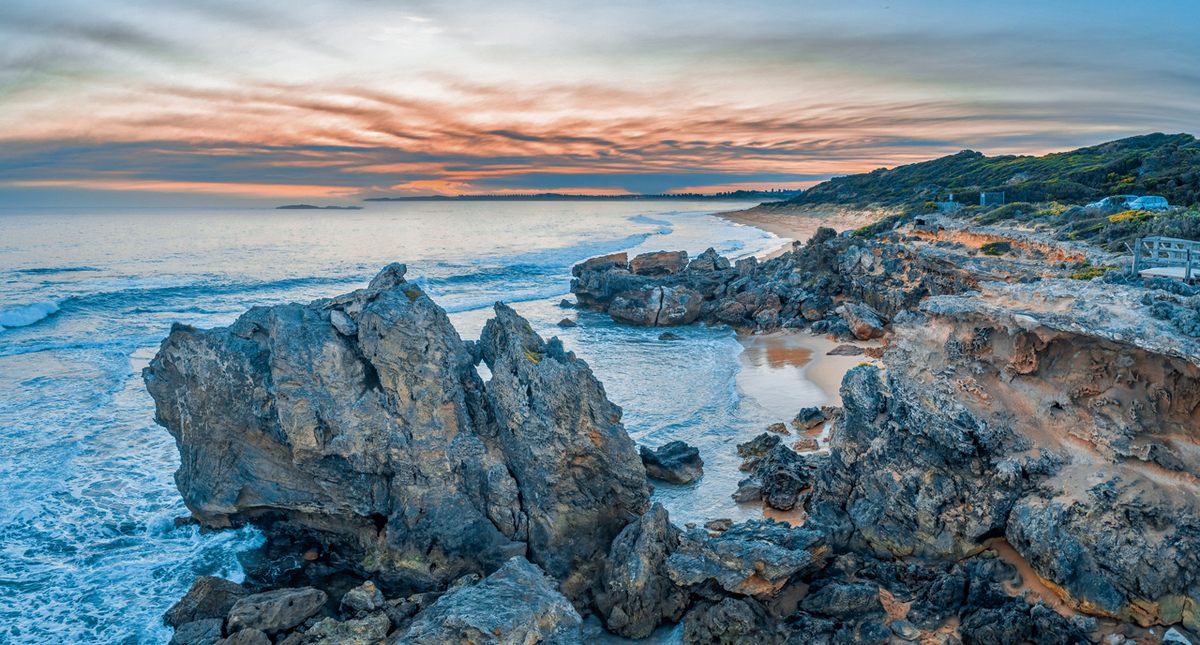
Watching the waves explode against the shore, it’s easy to imagine a foreign ship, blown off course by the arctic winds that batter Australia’s south coast, and unaware of the basalt reefs along the foreshore, succumbing to this formidable coastline.
The man on the beach continuing his 15-year search for the Mahogany Ship is Ross Poulter, a local treasure hunter. The day before our chance meeting, he and his partner, Margie, discovered an ornate brass fixture and the heavy lid of a snuff box buried in the surf. Poulter holds the brass relic up for me to admire its intricate flower design. Perhaps this new find will finally solve the mystery.

Whether a caravel or a rowboat, a wreck or a whisper, the Mahogany Ship endures as a symbol of the romantic era of adventure and exploration. But if the wreck is ever found, what then? “Get a couple of artifacts and put them in a museum,” says Poulter. “Why would you dig it up? Leave it here, let the legend live on.”

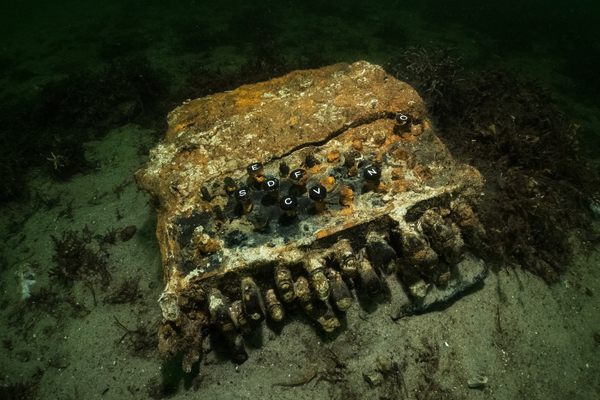
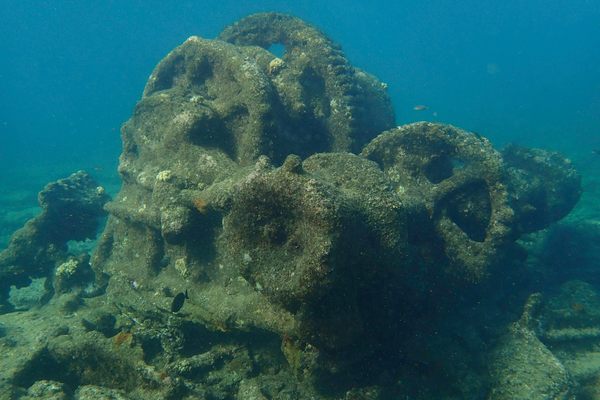
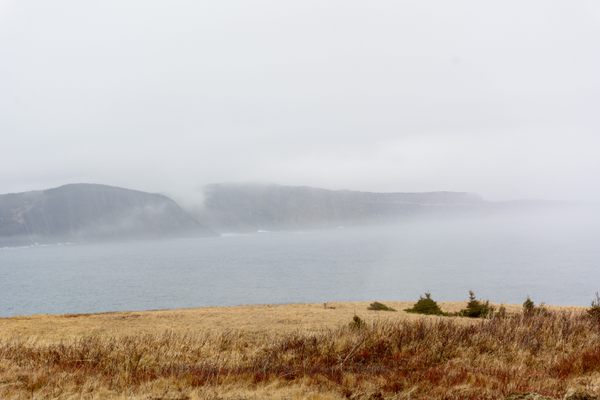
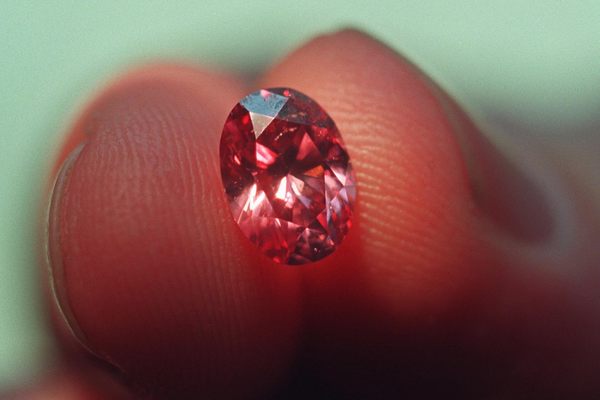
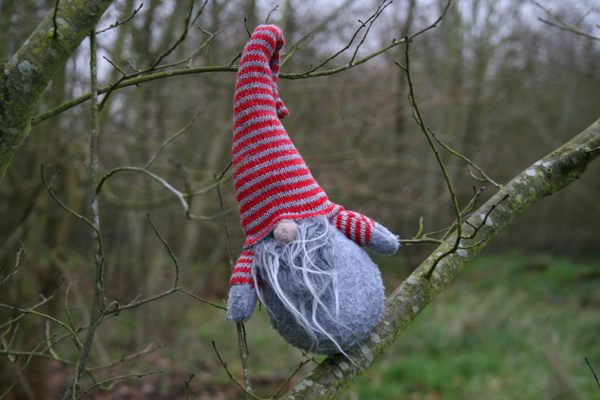



Follow us on Twitter to get the latest on the world's hidden wonders.
Like us on Facebook to get the latest on the world's hidden wonders.
Follow us on Twitter Like us on Facebook